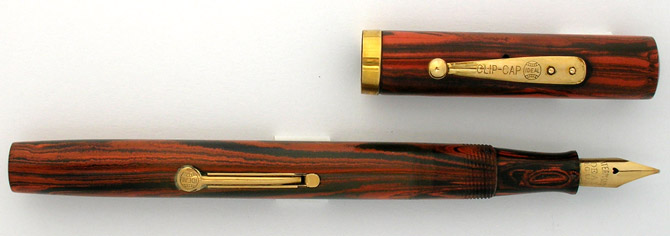 |
Since the beginnings of the History the humans have the need to create permanent records of their thoughts, events and commercial transactions. This need have driven the man to use sharpened stones to scratch visible signs onto the cave walls. With time, ink and more suitable writing surfaces were invented. Around 4000 years ago, the early Egyptians used hollow stems of marsh grasses cut to a point and filled them with dark coloured fruit juices to write on papyrus. In 1000 BC the Chinese were using fine brushes as writing instruments. Quill pens were introduced around 700 AD and remained as the most widely used writing instrument in the western hemisphere for over 1000 years! But the use of natural writing instruments demanded skill and effort to made and keep them in useful condition. What was needed was a pen ready to use, easy to maintain, that could carry its own ink supply and that could write in reliable way! The idea of the fountain pen was conceived! The first documented fountain pen kept a quill as a writing point and was created by the Parisian jeweler Nicholas Bion. The breakthrough in pen technology came when inexpensive steel points started to be mass-produced between the end of the 18th and beginnings of the 19th century.
JamesPerry received a patent in 1830 for cutting a hole and slits in stamped steel points to improve its flexibility and control of the ink flow. These points or nibs were fitted into a holder to dip them into the inkwell and to write. Gold were by far the best metal for nibs, due to its flexibility and chemical resistance to the highly acidic corrosive inks of the time. But it has a main disadvantage: it was too soft and too soon wore down. The new challenge was to find a more resistant material that could be affixed to the point in gold nibs. As a result of several trials, finally it was found that small spheres of iridium alloy soldered to the tip of the nib worked well.
The next step was then to fit an ink reservoir behind the nib, expecting it would supply ink to the point like in a bird quill. But the pen smiths soon discovered that these instruments did not work in the same way! Different approaches were tried to force the flow of the ink but no one was really satisfactory, for saying the less. The first successful pen documented was a stylographic pen
 |
Many fountain pens were being produced but they were plagued with failures. L.E.Waterman, insurance salesmen, patented the first successful fountain pen, by adding three groves in a feeder to a nib with a hole. In this way, alternating the pass of ink and air to compensate the pressure inside the reservoir, the ink flow was controlled. These early pens had a hollowed barrel where the ink was filled in with an eyedropper. The section that holds the nib and the feeder were unscrewed from the barrel to refill the ink. At that time an easily available and workable material was hard rubber. So many of these early pens were made of this material, sometimes with attractive repousee overlays or trims of silver or gold. Many companies, that till then had manufactured dip pens and penholders, reconverted to fountain pen production. The refilling system with eyedroppers was messy and unpractical. By the turn of the century made their appearance self filling systems with a rubber sac inside the barrel that was collapsed somehow and released when the nib was dipped in the inkwell, refilling the ink without the need of an eyedropper or to dissemble the pen. During the first half of the 20th century beautiful and functional models of fountain pens were produced. Its possession was symbol not only of wealth and taste but also of study and knowledge. At the end of the 30s the appearance of the ball pens would change the course of this development.
Many of the elegant fountain pens were relegated to obscure drawers and forgotten. Nowadays these pens are highly collectable not only for being attractive and smart but for the enjoyment of using them, for the fascination of their stories, for the interest in their development, for the desire to preserve them and also as an investment!

